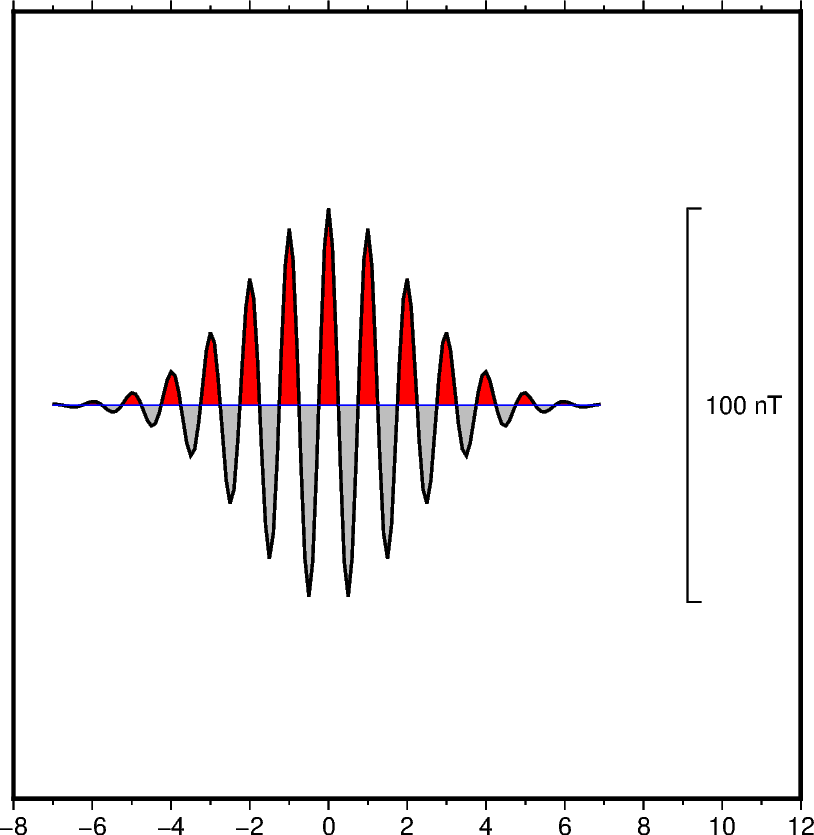Note
Go to the end to download the full example code.
Wiggle along tracks
The pygmt.Figure.wiggle method can plot z = f(x,y) anomalies along
tracks. x, y, z can be specified as 1-D arrays or within a
specified file. The scale parameter can be used to set the scale of the
anomaly in data/distance units. The positive and/or negative areas can be
filled with color by setting the fillpositive and/or fillnegative
parameters.

import numpy as np
import pygmt
# Create (x, y, z) triplets
x = np.arange(-7, 7, 0.1)
y = np.zeros(x.size)
z = 50 * np.exp(-((x / 3) ** 2)) * np.cos(2 * np.pi * x)
fig = pygmt.Figure()
fig.basemap(region=[-8, 12, -1, 1], projection="X10c", frame=["Snlr", "xa2f1"])
fig.wiggle(
x=x,
y=y,
z=z,
# Set anomaly scale to 20 centimeters
scale="20c",
# Fill positive areas red
fillpositive="red",
# Fill negative areas gray
fillnegative="gray",
# Set the outline width to 1.0 point
pen="1.0p",
# Draw a blue track with a width of 0.5 points
track="0.5p,blue",
# Plot a vertical scale bar at Middle Right (MR). The bar length (+w)
# is 100 in data (z) units. Set the z unit label (+l) to "nT".
position="jMR+w100+lnT",
)
fig.show()
Total running time of the script: (0 minutes 0.122 seconds)